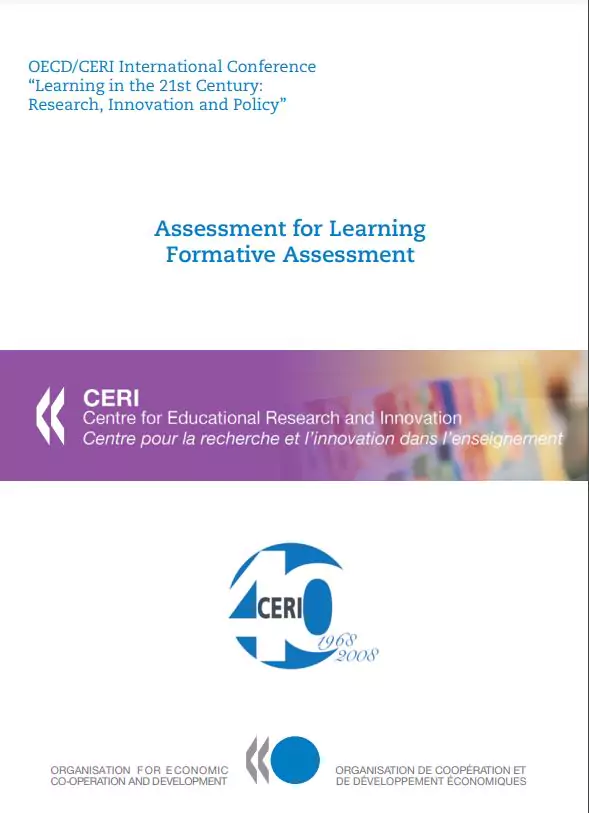‘Assessment for Learning’ PDF Quick download link is given at the bottom of this article. You can see the PDF demo, size of the PDF, page numbers, and direct download Free PDF of ‘Assessment for Learning’ using the download button.
Assessment for Learning PDF Free Download

Assessment for Learning
Assessment for learning (AFL) is an approach to teaching and learning that produces feedback that is used to improve student performance. Students become more involved in the learning process and this gives them confidence in what they are expected to learn and to what level.
One way of thinking about AFL is that it aims to ‘bridge the gap’ between the learner’s current situation and where they want to be in their learning and attainment. Skillful teachers plan tasks that help learners do this.
AFL involves students becoming more active in their learning and beginning to ‘think like a teacher’. They think more actively about where they are now, where they are going, and how to get there.
Effective teachers integrate AFL into their lessons as a natural part of their work, choosing how much or how little to use the method. AFL can be adapted to suit the age and ability of the learners involved.
AFL strategies are directly linked to improved student performance on summative tests and examinations. Research shows that these strategies especially help low-achieving students increase their learning.
6 Types Of Assessment Of Learning
1. Diagnostic Assessment (as Pre-Assessment)
One way to think about it: Assesses a student’s strengths, weaknesses, knowledge, and skills prior to instruction
Another way to think about it: A baseline to work from
Tip: Done at the beginning–of the school year, the beginning of a unit, the beginning of a lesson, etc.
- Formative assessment
One way to think about it: Assesses a student’s performance during instruction, and usually regularly throughout the instruction process
Another way to think about it: is like a doctor’s ‘check-up’ to provide data to modify the instruction.
Tip: Using a digital exit ticket tool like Loop can be an easy means of checking whether students have understood lesson material, as well as promoting student reflection.
- Summative Assessment
So what are the different types of learning assessment? The next time someone says ‘assessment’, you can say, “What type, and what are we doing with the data?” For example, summative assessment.
One way to think about it is to measure a student’s achievement at the end of instruction. It’s like talking to someone about a movie after it’s over. ,
Another way to think about it: This is terrible, but if formative assessment is the test, you can think of summative assessment as an autopsy. What happened? Now that it’s all over, what went right and what went wrong?
Tip: Using measurements of student performance, summative assessments can be useful for teachers to improve units and lessons from year to year because they are in a way as much a reflection on the quality of units and lessons as they are on Are themselves. Student.
- Norm-referenced assessment
One way to think about it: comparing one student’s performance to that of other students (a national group or other ‘norm’)
Another way to think about it: location, group, or ‘demographic’ assessment. Many standardized tests are used as norm-referenced assessments.
Tip: These types of assessments are useful over time, for example, in student profiles or for placement in national-level programs.
- Criteria-Referenced Evaluation
One way to think about it: measuring student performance against a goal, specific objective, or standard
Another way to think about it: measure all students once
Tip: This can be a type of formative assessment and should be integrated throughout your curriculum to guide adjustments to your teaching over time. Mastery or competency-based learning will use criterion-referenced assessment.
- Interim/Benchmark Evaluation
One way to think about it: Periodically, often at the end of a grading period, evaluate student performance. Can predict student performance on year-end summative assessments. Benchmark evaluations are a type of interim evaluation, so it may be useful to consider them separately, even though they function in a similar way.
Another way to think about it: bar graphs or charts of growth over an entire year, often against specific ‘benchmarks’
Tip: Benchmark assessments can be useful for communicating important facts and data to parents, district officials, and others for, among other goals, allocating resources (time and money) to respond to that data. To inform about.
| Language | English |
| No. of Pages | 25 |
| PDF Size | 1 MB |
| Category | Education |
| Source/Credits | – |
Related PDFs
- Kaufvertrag Auto Privat PDF In German
- Iparcours 5ème Corrigé PDF In French
- Paraulogic Avui Solucions PDF
- Recetas Airfryer PDF In French
- Kerala School Kalolsavam Manual PDF In Malayalam
- BPSC Center Code List PDF
Assessment for Learning PDF Free Download
